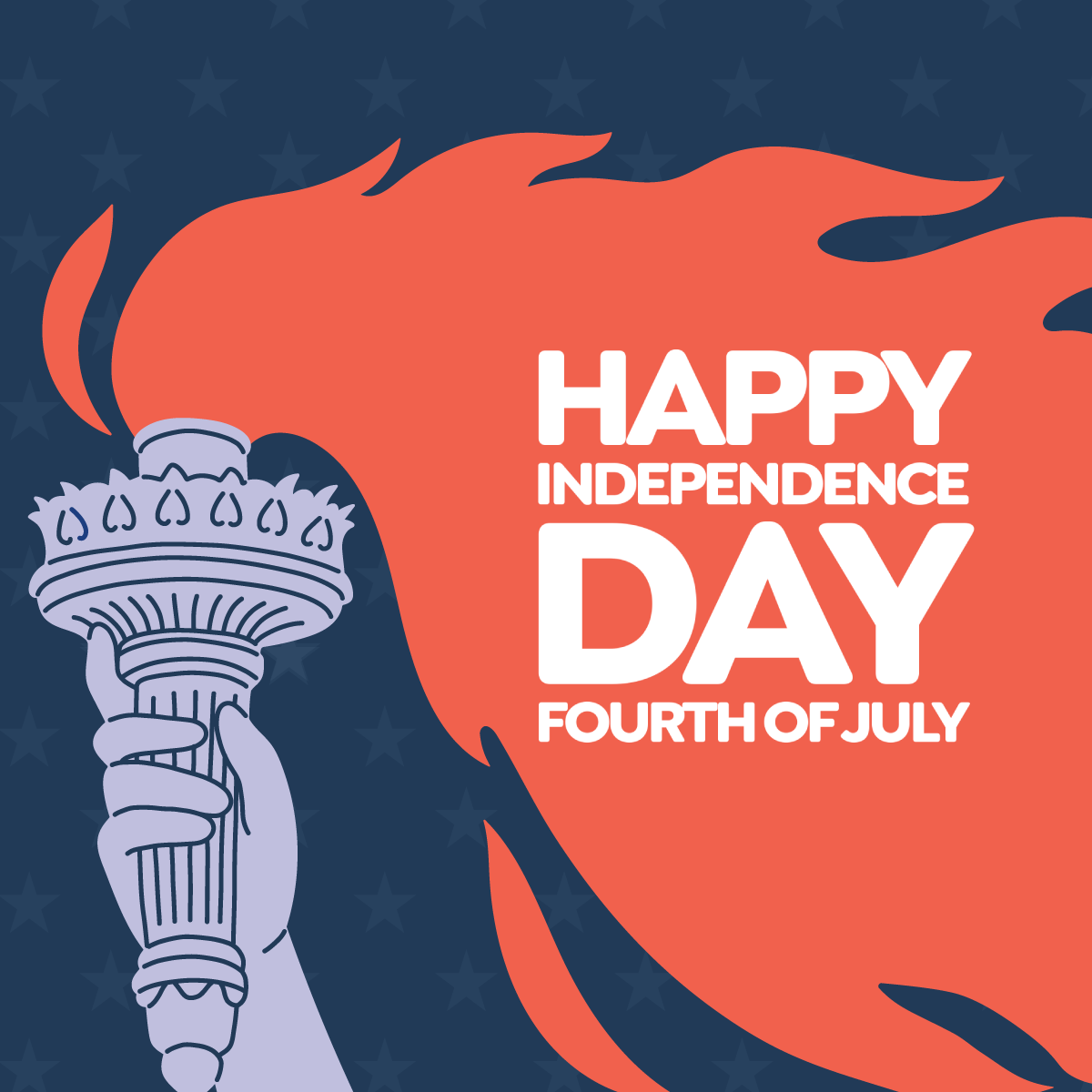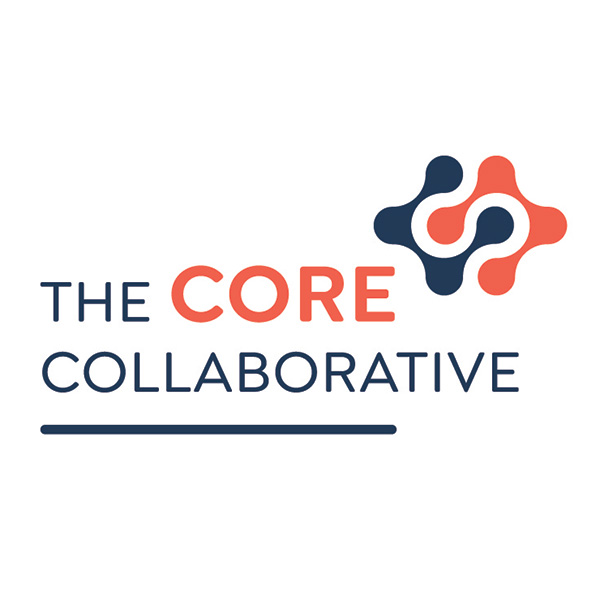Independence Day is a time to reflect not only on our history, but on the future we are shaping together. At its best, America is a place where people of every background can express themselves, build community, and contribute to a shared vision of justice and opportunity. This year, we’re celebrating the 4th of July by uplifting powerful children’s literature that explores what it means to be free, to belong, and to participate in the ongoing work of democracy.
At The Core Collaborative, we believe that developing the skills, empathy, and understanding necessary to participate in a strong democracy is essential—not only for students, but for the educators and communities who support them. That’s why in Leading Impact Teams, civic courage, collective efficacy, and student voice are not abstract ideas—they’re habits of mind nurtured through inquiry, collaboration, and reflection.
The books we have shared below remind us that independence isn’t just about personal freedom—it’s about interdependence, civic imagination, and making space for every voice. They offer young readers a window into the founding ideals of the United States and the many ways those ideals are being reimagined and reclaimed today.
What Is the Declaration of Independence? by Michael C. Harris, illustrated by Jerry Hoare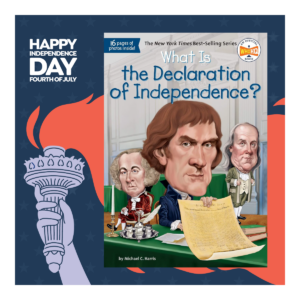
Part of the What Was? In this accessible nonfiction series, young readers are introduced to the origins, context, and lasting impact of the Declaration of Independence. It explains the events leading up to July 4, 1776, and helps students understand why the document remains a cornerstone of American democracy. Michael C. Harris is an American historian and writer who specializes in making key moments in U.S. history approachable for young audiences. This title reflects his passion for civic education and clear, engaging storytelling.
Classroom Application:
Use this text to support informational reading standards and historical understanding. Have students create their own classroom “Declarations” of what a just and inclusive community should include. Pair with excerpts from the original document and guide a discussion about its purpose, language, and modern relevance.
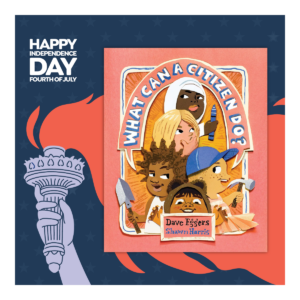 What Can a Citizen Do? by Dave Eggers, illustrated by Shawn Harris
What Can a Citizen Do? by Dave Eggers, illustrated by Shawn Harris
With rhythmic text and vibrant cut-paper illustrations, What Can a Citizen Do? is a powerful call to action for young readers. It shows that citizenship is about more than voting—it’s about kindness, collaboration, responsibility, and standing up for what’s right. The book explores how everyday actions build stronger communities and how even the youngest citizens can make a difference. Dave Eggers is an award-winning American author and social entrepreneur. Through his writing and nonprofit work, Eggers champions civic engagement, education, and storytelling as tools for change. His own journey as a writer and activist underscores the idea that citizenship is a verb—something we do, together.
Classroom Application:
Use this book to open a discussion on what it means to be an active citizen in a classroom, school, or community. Students can brainstorm a “Citizenship Action Board” of ideas big and small—from helping a new student feel welcome to organizing a service project. Have them write or draw about one action they plan to take as a citizen this year.
We Are Here by Tami Charles, illustrated by Bryan Collier
This poetic and visually stunning book is a celebration of Black excellence, resilience, and contribution throughout American history. From scientists and artists to athletes and activists, We Are Here speaks to the power of presence and legacy. Tami Charles is a former educator and bestselling author who brings her lived experience and love of history to every book. As a Black American woman and writer, she honors the stories too often left out of the traditional narrative.
Classroom Application:
Use this book as a read-aloud to kick off conversations about representation and community impact. Invite students to create “We Are Here” portraits or poems that highlight the unique strengths and stories of their own families and communities.
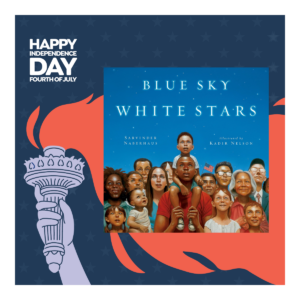 Blue Sky White Stars by Sarvinder Naberhaus, illustrated by Kadir Nelson
Blue Sky White Stars by Sarvinder Naberhaus, illustrated by Kadir Nelson
With minimal text and breathtaking illustrations, this book offers a layered interpretation of the American flag and the ideals it represents. It pairs historical imagery with contemporary scenes, showing the United States through a lens of possibility, sacrifice, and inclusion.
Sarvinder Naberhaus is a first-generation Indian American who brings a deep appreciation for American values and symbols to this book. Her work reflects the dual lens of immigrant experience and deep national pride.
Classroom Application:
Have students select a line or image from the book and respond with a drawing or short paragraph that reflects what that symbol means to them. Encourage discussion about different perspectives on patriotism, freedom, and responsibility.
I Walk With Vanessa by Kerascoët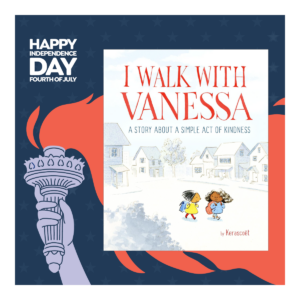
This wordless picture book tells the story of one small act of allyship—a student choosing to walk with a classmate who has been bullied. Though not about the 4th of July directly, it models the kind of everyday civic courage that strengthens democracy. Kerascoët is the pen name for French-American illustrators Marie Pommepuy and Sébastien Cosset. Now based in the U.S., their books promote empathy, kindness, and justice through accessible, universal storytelling.
Classroom Application:
Use this book to launch a conversation about inclusion and action. Ask students to identify small choices they can make to stand up for others or build a welcoming classroom. Tie this to broader discussions about community and justice.
 A More Perfect Union: A New Vision for Building the Beloved Community by Hena Khan
A More Perfect Union: A New Vision for Building the Beloved Community by Hena Khan
This empowering nonfiction book, geared toward our more mature learners, introduces readers to the concept of a “beloved community,” drawing inspiration from Dr. Martin Luther King Jr.’s dream and connecting it to today’s changemakers. Hena Khan is a Pakistani American author whose books often explore identity, belonging, and civic participation. As a proud Muslim American, she writes stories that reflect the fullness of American life through an inclusive lens.
Classroom Application:
Invite students to define what “a more perfect union” means in their own words. They can write letters, create posters, or design a classroom charter inspired by the book’s themes of inclusion, justice, and shared responsibility.
America, My Love, America, My Heart by Daria Peoples-Riley
This lyrical book questions what it means to belong in America and affirms that every child deserves to be seen and loved. It powerfully centers the voices and emotions of children who have been excluded or questioned for who they are. Daria Peoples-Riley is a former teacher and African American author-illustrator who creates books that reflect the emotional interior of Black and Brown children. Her stories empower young readers to speak their truth and claim their space.
Classroom Application:
Use this book during morning meetings or SEL time to center identity and affirmation. Have students write or draw responses to the prompt: “What makes you feel like you belong?” or “What should America promise every child?”
Honoring the Best of What America Is and Can Be
These books offer a way to celebrate the 4th of July that’s honest, inclusive, and hopeful. They spark important conversations about the rights and responsibilities of citizenship—and the creative, courageous work it takes to build a country where everyone is truly free. By sharing these stories, we help young readers understand that the promise of America is still unfolding—and they have a part to play in it.
Extend the Impact with Youth Equity Stewardship (YES)
Want to go further in helping students find their voice and contribute to a more just and inclusive school, local, and national culture? Youth Equity Stewardship (YES) is an experiential learning model that brings students and adults together to explore identity, build empathy, and engage in creative collaboration. YES honors the spirit of these books by positioning youth as change agents in their communities.
YES PLEASE

